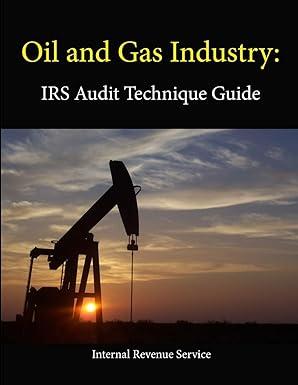Question
QUESTION 1 The following information applies to the questions displayed below.] Raner, Harris, & Chan is a consulting firm that specializes in information systems for
QUESTION 1
The following information applies to the questions displayed below.]
Raner, Harris, & Chan is a consulting firm that specializes in information systems for medical and dental clinics. The firm has two officesone in Chicago and one in Minneapolis. The firm classifies the direct costs of consulting jobs as variable costs. A contribution format segmented income statement for the companys most recent year is given below:
| Office | ||||||||||||
| Total Company | Chicago | Minneapolis | ||||||||||
| Sales | $ | 675,000 | 100.0 | % | $ | 135,000 | 100 | % | $ | 540,000 | 100 | % |
| Variable expenses | 364,500 | 54.0 | % | 40,500 | 30 | % | 324,000 | 60 | % | |||
| Contribution margin | 310,500 | 46.0 | % | 94,500 | 70 | % | 216,000 | 40 | % | |||
| Traceable fixed expenses | 151,200 | 22.4 | % | 70,200 | 52 | % | 81,000 | 15 | % | |||
| Office segment margin | 159,300 | 23.6 | % | $ | 24,300 | 18 | % | $ | 135,000 | 25 | % | |
| Common fixed expenses not traceable to offices | 108,000 | 16.0 | % | |||||||||
| Net operating income | $ | 51,300 | 7.6 | % | ||||||||
1.
value: 2.00 points
Required information
Required:
1-a. Compute the companywide break-even point in dollar sales. (Round "CM ratio" to 2 decimal places and final answer to the nearest whole dollar amount.)
1-b. Compute the break-even point in sales dollars for the Chicago office and for the Minneapolis office. (Round "CM ratio" to 2 decimal places and final answers to the nearest whole dollar amount.)
1-c. Is the companywide break-even point greater than, less than, or equal to the sum of the Chicago and Minneapolis break-even points?
| Greater than | |
| Less than | |
| Equal to |
QUESTION 2
Fogerty Company makes two products, titanium Hubs and Sprockets. Data regarding the two products follow:
| Direct Labor-Hours per Unit | Annual Production | ||
| Hubs | 0.80 | 23,000 | units |
| Sprockets | 0.40 | 55,000 | units |
|
| |||
Additional information about the company follows:
a. Hubs require $36 in direct materials per unit, and Sprockets require $20.
b. The direct labor wage rate is $19 per hour.
c. Hubs are more complex to manufacture than Sprockets and they require special equipment.
d. The ABC system has the following activity cost pools:
| Estimated | Activity | ||||
| Activity Cost Pool (Activity Measure) | Overhead Cost | Hubs | Sprockets | Total | |
| Machine setups (number of setups) | $ | 23,760 | 110 | 88 | 198 |
| Special processing (machine-hours) | $ | 157,500 | 4,500 | 0 | 4,500 |
| General factory (organization-sustaining) | $ | 260,400 | NA | NA | NA |
|
| |||||
Required:
1. Compute the activity rate for each activity cost pool.
2. Determine the unit product cost of each product according to the ABC system. (Round intermediate calculations and final answers to 2 decimal places.)
QUESTION 3
Hirams Lakeside is a popular restaurant located on Lake Washington in Seattle. The owner of the restaurant has been trying to better understand costs at the restaurant and has hired a student intern to conduct an activity-based costing study. The intern, in consultation with the owner, identified three major activities and then completed the first-stage allocations of costs to the activity cost pools. The results appear below.
| Activity Cost Pool | Activity Measure | Total Cost | Total Activity | ||
| Serving a party of diners | Number of parties served | $ | 19,040 | 5,600 | parties |
| Serving a diner | Number of diners served | $ | 119,700 | 12,600 | diners |
| Serving a drink | Number of drinks ordered | $ | 37,080 | 10,300 | drinks |
The above costs include all of the costs of the restaurant except for organization-sustaining costs such as rent, property taxes, and top-management salaries.
Some costs, such as the cost of cleaning the linens that cover the restaurant's tables, vary with the number of parties served. Other costs, such as washing plates and glasses, depend on the number of diners served or the number of drinks served.
Prior to the activity-based costing study, the owner knew very little about the costs of the restaurant. She knew that the total cost for the month (including organization-sustaining costs) was $180,000 and that 12,000 diners had been served. Therefore, the average cost per diner was $15.
Required:
1. According to the activity-based costing system, what is the total cost of serving each of the following parties of diners? (Round your intermediate calculations and final answers to 2 decimal places.)
2. Convert the total costs you computed in (1) above to costs per diner. In other words, what is the average cost per diner for serving each of the following parties? (Round your intermediate calculations and final answers to 2 decimal places.)
Step by Step Solution
There are 3 Steps involved in it
Step: 1

Get Instant Access to Expert-Tailored Solutions
See step-by-step solutions with expert insights and AI powered tools for academic success
Step: 2

Step: 3

Ace Your Homework with AI
Get the answers you need in no time with our AI-driven, step-by-step assistance
Get Started


